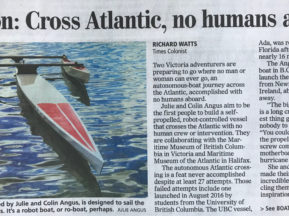Book Review: ‘Olive Odyssey’ by Julie Angus
A Syrian-Canadian adventurer traces how the olive tree took root around the Mediterranean.
By Christopher Bakken
Where almost nothing else can grow—on eroded, rock-riddled, sweltering hillsides—olive trees take root, so harvesting them is a tedious, exhausting business, almost inevitably done by hand. We have found ways to mechanize the harvesting of almost every other edible plant, but olives resist our technological advances. Olive-picking machines tend to damage the trees, and old groves are rarely arranged in uniform, tractor-friendly rows. The tree prefers manual labor, and for thousands of years this need has encouraged an intimate engagement between the olive and human beings.
It makes poetic sense that olives are so stubbornly anachronistic. As Julie Angus points out early in “Olive Odyssey,” “whereas vines can barely reach a hundred years old, the longevity of olive trees allows us to eat and make oil from fruit of the very same tree that nourished people two millennia ago.” Exploring this remarkable continuity is at the heart of Ms. Angus’s odyssey, which in true Homeric fashion she undertakes with an actual sailboat on real salt seas.
Her journey originates with a family feast in Aleppo. “A first-generation Canadian with a Syrian father,” Ms. Angus returns to her father’s homeland to “piece together” her history. The “simplicity and purity” of her Syrian family’s olive oil, pressed from fruit grown near the Turkish border and drizzled with abandon on every dish, evokes unexpected layers of complexity. As she listens to her family’s stories, she realizes that “the fruit’s rhythms and cycles guided their lives—what they ate, whom they married, and how much money they made. The olive tree was at the core of who they were.”
Of course, that statement might apply to any Mediterranean olive-growing family—Jewish, Christian or Muslim—and while it is clear that the olive has domesticated human beings for the past 5,000 years or so, it’s much less clear when exactly we domesticated the olive.
Olive pits found north of the Dead Sea, dating from around 3700 B.C., are the oldest evidence we have of domesticated olives, “supporting the theory the olive was domesticated in the Middle East and migrated westward throughout the Mediterranean.” DNA forensics, Ms. Angus hopes, might back up the hypothesis that the olive traveled to the places we now call Greece, Italy and Spain on the ships of Phoenician traders.
With the support of the Perugia Institute of Plant Genetics, Ms. Angus sets out on the olive trail, beginning in Spain, at the far western ends of those trade lines. She and her husband, Colin, purchase a sailboat in Barcelona and then make their way east along a chain of ancient trading posts. She interviews growers and executives, becomes a confident olive-oil taster, eats a lot of very good food, and spends her days scampering up cliffs in search of wild olive trees and clipping their leaves and branches for later analysis in the Italian lab.
To complete his nostos, his journey home, the hero Odysseus had to brave sirens, cranky gods, a Cyclops and the horrors of Scylla and Charybdis. Julie Angus’s odyssey reads a bit more like a vacation, and it’s easy to wonder if this book wasn’t the excuse for an elaborate sailing jaunt. After all, the olive grows in some of the most ruggedly beautiful places on earth. The quest requires Ms. Angus and her husband to unfurl their sails along the Costa Brava and the Côte d’Azur and to pull into harbor at places like Cassis, Cannes, Antibes, Corsica and Sardinia. After that, they ditch the sailboat and visit equally desirable Umbria, Crete and Israel.
But if anyone is qualified to wring travail and adventure out of these unreasonably glamorous locales, it is Julie Angus. She was the first woman to row across the Atlantic Ocean from mainland to mainland (in hurricane season, no less). And she is trained as a molecular biologist, so she has got the scientific acumen to decipher the nuances of the olive genome and to explain why one sort of DNA is more reliable than another for studying tree genetics.
On top of all that, Ms. Angus does her sailing and olive-chasing while adjusting to life as a new mother. In the book’s opening scene, the couple’s sailboat races across the water, “heeling over like a drunk at an open bar,” while her 10-month-old son, Leif, shrieks below deck. “He was only 4.5 meters away,” she writes, “but I couldn’t do anything. I couldn’t leave the tiller until Colin returned from adjusting the boom vang for the mainsail, and even if I could have, going inside that dark, rocking cabin would have made me vomit.”
“Olive Odyssey” oozes facts and statistics, at times to the point of redundancy, when Ms. Angus’s personal story feels only loosely grafted on. But it is a pleasure to try to keep up with this book; like its author, it covers an enormous amount of territory. In addition to her inquiry into olive genetics, Ms. Angus investigates the oft-touted health benefits of olive oil (all of which turn out to be valid), and she makes a convincing case for moving to olive-oil-guzzling Sardinia, where the world’s oldest siblings live, or to Greece, another paradise for centenarians, where each inhabitant consumes around 26 liters a year. Ms. Angus notes, “that’s like drinking a wine glass of olive oil every other day.”
She also offers a compelling look into the politics and economics of olive oil, especially as they relate to olive-oil fraud. This problem dates at least as far back as the Roman era and is still centered in Italy. There, oil imported from across the Mediterranean is bottled after being adulterated with inferior or rancid product or diluted with other vegetable oils. Then it is shipped off to undiscerning Americans and Northern Europeans, most of whom don’t have a taste for the real extra-virgin.
Olive oil, Ms. Angus suggests, might also remedy the current economic crisis in Greece. Even though Greece is the world’s “third-largest olive oil producer, pressing two-thirds as much oil as Italy,” the Greeks have failed to tap into the enormous international export markets and have wound up shipping most of their oil to Italy at a fraction of what it is worth. There it is bottled and sold as Italian oil. What kind of economic revival, she wonders, might result from “a shift in thinking, a move away from producing anonymous oil sold to bulk buyers and a focus on quality and identity”?
By the end of “Olive Odyssey,” the samples that Ms. Angus has collected provide “the most conclusive evidence” yet that cultivated olives originated in the Middle East and were spread across the Mediterranean by Phoenicians. But Ms. Angus never makes it home. Her book ends rather abruptly, her nostos incomplete. The Arab Spring spills over into Syria, and violence there makes it impossible to return to the family trees. Gunfire is now heard among Syrian olives. People on the run from Assad’s forces hide in her family’s groves, using the silver leaves as cover while en route across the border to Turkey. This lends a final poignancy to Ms. Angus’s voyage, not to mention her hymn to the tree that has been a “silent witness to mankind’s great achievements and follies.”
—Mr. Bakken’s memoir, “Honey, Olives, Octopus: Adventures at the Greek Table,” appeared in 2013. He teaches at Allegheny College.



















